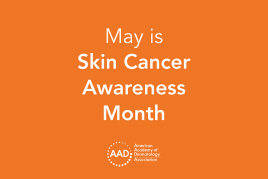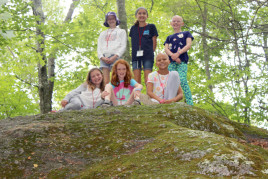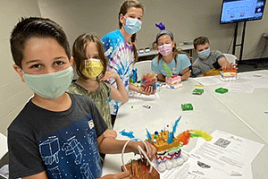Skin: Warts and fungus (ages 8-10)
Good Skin Knowledge lesson plan
Time: 45 min
Objective
Students will be able to:
Give a brief description of a wart
Explain at least one way to prevent fungus
Learn where you can get warts and fungus on our bodies
Materials
Wart Wisdom handout (enough copies for class)
Fungus Facts handout (enough copies for class)
Wisdom or Fact Info Sheet handout (1 copy for Facilitator only)
Assessment
During Introduction to New Material, assess whether students have grasped the information by asking review questions.
During Guided Practice “Wisdom or Fact” game, evaluate students’ knowledge on subject matters based on how they answer the questions.
Opening
3-5 minutes
Ask students what is the first thing they think of when they hear the word “wart.”
Ask the same thing for the word “fungus.”
Explain, “Today we are going to be learning about both warts and fungus and that they are, in fact, common conditions.”
Introduction to new material
15-20 minutes
Materials:
Wart Wisdom handout (enough copies for class)
Fungus Facts handout (enough copies for class)
Tell students, “We are going to play a quick game of True or False. Ready?” Depending on group, have students raise hands or have students call out whether they think it’s true or false.
Read statements below and, after each one, gives a brief explanation.
You can get warts from toads. (False) This is what they call an “old wives tale.” They say this because toads have bumps on their backs that look like warts.
Skin can get fungus. (True) Yes! We can get infections and fungus, but we can also prevent it with the right steps.
Ringworms are little worms that crawl in your skin. (False) Ringworm is a fungus, and it is called “ringworm” because of its ring–like shape on the skin.
Someone with warts or fungus is dirty. (False) Not at all! Anyone can get a fungus or wart, especially if they are contagious! Fungus and warts affect people in clean and dirty environments.
Warts can go away by themselves. (True) True! We can speed up the process, but eventually warts will go away.
Say, “So what if we think we have a wart? How do we know? What do we do?”
Pass out Wart Wisdom handout and goes through each fact: When talking about where warts form, here is information you can say about characteristics of warts on face, bottom of feet, and fingers:
Warts on your face are generally flat, or long and skinny like fingers.
Warts on the bottom of your feet are generally large, flat bumps. They are actually called “plantar warts” and might hurt when you walk on them.
Warts on your fingers look like blisters, but are harder. They can also make your nails look weird.
Reinforce material by asking students, “So if you have a wart, does that mean you’re dirty?” Students should respond, “No.” If students respond incorrectly, go over the fact that warts can spread from anyone or anything to anyone. You can get out of the shower and touch something with the wart virus and get one!
Say, “But what about fungus? Usually when we think about fungus, we think of icky stuff that grows on old food. One of the most common places to get fungus, though, is on your feet and nails.”
Pass out Fungus Facts handout to students.
Go through each fact.
After Fungus Facts, explain that even though, yes, fungus can be gross, it’s not weird or strange. And really, it’s not THAT gross. Just sounds worse than it is! It’s very normal for kids, teenagers, and adults to get fungal infections.
Guided practice
15-20 minutes
Wart Wisdom handout (enough copies for class)
Fungus Facts handout (enough copies for class)
Wisdom or Fact Info Sheet handout (1 copy for Facilitator only)
Say, “We are now going to play a game. Take five minutes to review some of the information we went over today, either by yourself, or with a partner.”
After five minutes is up, have them either turn-over the handout, or put them away.
Say that they will be playing “Wisdom or Fact.”
Explain:
In this game, there will be two (or more) teams. One person from each will play at the same time. If you think students feel comfortable, have one person from each team come up to the front instead. Have students in each team count starting at “1” so it is easy to match-up students from each team on their turns. OR
Read a statement that is either a “Fungus Fact” or “Wart Wisdom,” and the student has to decide whether it has to do with warts or fungus. Use Wisdom or Fact Info Sheet, which has the facts from the two handouts condensed on one so it is easier to read for the game.
The first person to raise their hand (or slap the desk, or say “Skin!”—any variety of things could work here) gets to answer by saying either “Wart Wisdom!” or “Fungus Fact!” depending on if s/he thinks it is a fact about warts or fungus, respectively.
Then the next student from each team goes.
Points are optional.
Closing
1-2 minutes
Ask, “So who can get warts or fungus?” (Anyone.)
Ask, “Do warts or fungus mean you are dirty?” (No.)
 Think sun protection during Skin Cancer Awareness Month
Think sun protection during Skin Cancer Awareness Month
 How to care for your skin if you have lupus
How to care for your skin if you have lupus
 Practice Safe Sun
Practice Safe Sun
 Sunscreen FAQs
Sunscreen FAQs
 Fade dark spots
Fade dark spots
 Hidradenitis suppurativa
Hidradenitis suppurativa
 Laser hair removal
Laser hair removal
 Scar treatment
Scar treatment
 Botox
Botox
 Kids' camp - Camp Discovery
Kids' camp - Camp Discovery
 Dermatologist-approved lesson plans, activities you can use
Dermatologist-approved lesson plans, activities you can use
 Find a Dermatologist
Find a Dermatologist
 Why choose a board-certified dermatologist?
Why choose a board-certified dermatologist?